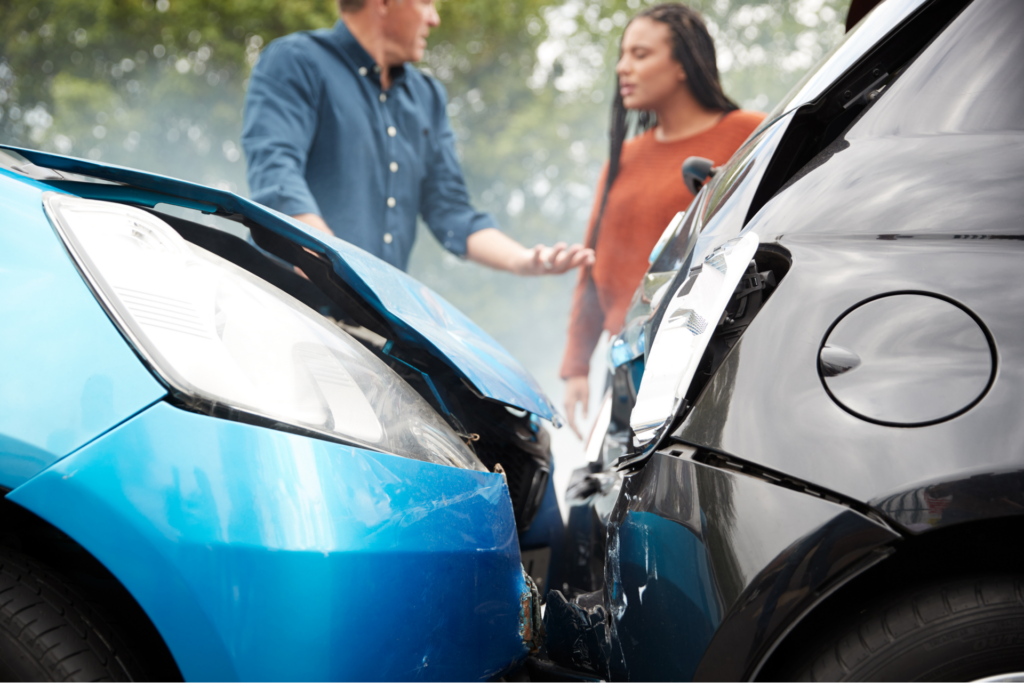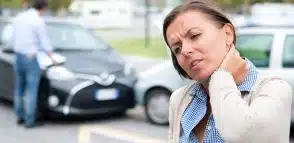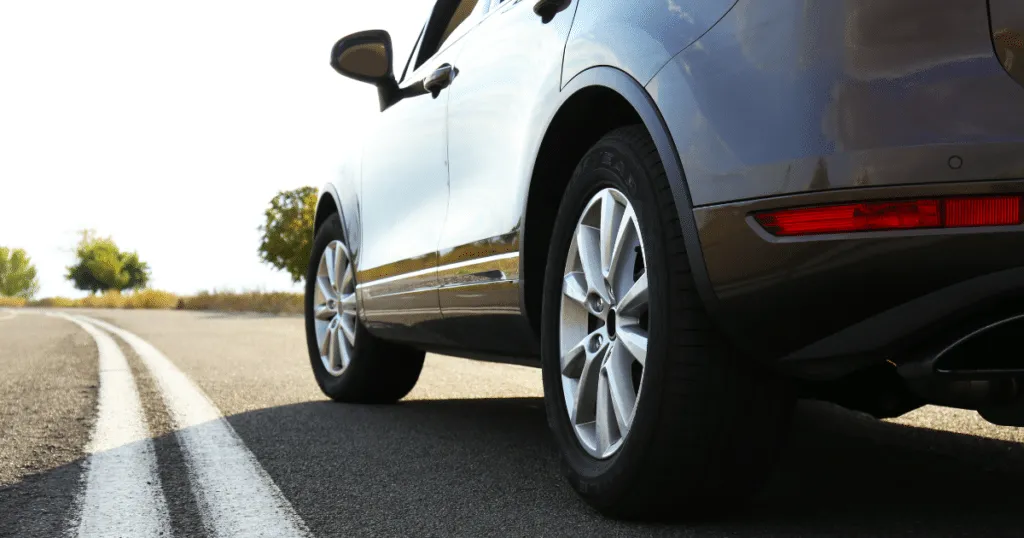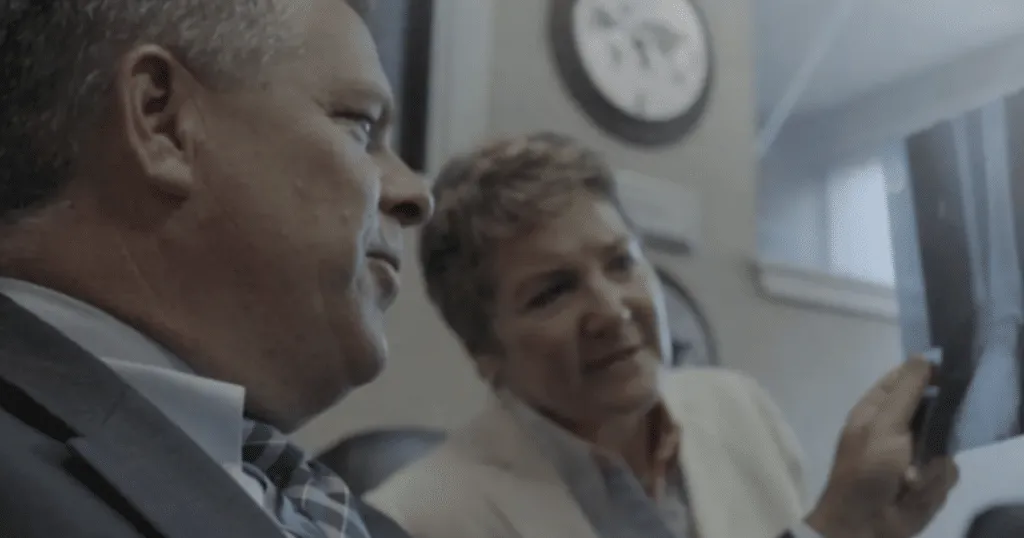
Being hit by an uninsured driver can be a daunting experience, leaving you with a mix of confusion and concern about the next steps. In the United States, it’s a significant issue, with the Insurance Research Council reporting that one in seven drivers countrywide (14.0 percent) were uninsured (2022 data). This statistic underscores the reality that every time you get behind the wheel, there’s a possibility of encountering an uninsured driver.
Importance of Knowing Your Rights and Responsibilities
In such situations, understanding your rights and responsibilities is crucial. The central question that arises is: what happens if an uninsured driver hits you? The answer lies in navigating the complexities of insurance laws, which vary by state, and the specifics of your insurance policy. Typically, if you have uninsured motorist coverage, your insurance company should compensate you for the losses. However, this is contingent upon the terms of your policy and the extent of your coverage.
This guide is tailored to provide you with a comprehensive understanding of how to deal with uninsured motorist accidents. From the risks posed by uninsured drivers to the nuances of insurance claims and legal considerations, we’ll cover everything you need to know to handle these situations with confidence and knowledge. Whether you’re filing a claim, seeking legal counsel, or exploring your rights, this guide offers expert insights and practical advice for every step of the process.
Understanding Uninsured Motorist Accidents
Navigating the aftermath of a car accident can be challenging, but the complexity increases manifold when an uninsured driver is involved. In this section, we delve deep into the various aspects of uninsured motorist accidents, addressing the risks, insurance coverage nuances, and how state laws impact these situations. This knowledge is crucial, not just for legal compliance but also for your financial protection and peace of mind.
The Risks of Uninsured Drivers
The issue of uninsured drivers on the road presents a substantial risk to all motorists. Understanding these risks is crucial for every driver, as it shapes the way we approach our own vehicle insurance and how we respond in the event of an accident.
- Statistics and the Scope of the Problem: According to the Insurance Information Institute, a significant number of drivers in the United States, about 14%, do not have an insurance. This alarming figure translates to a high probability of encountering an uninsured driver during an accident. The absence of insurance on their part places a significant financial and legal burden on the insured driver involved in the collision.
- Financial Implications for Insured Drivers: One of the primary risks of being hit by an uninsured driver is the financial impact. Without the at-fault driver’s insurance to cover damages, you may have to bear the cost of vehicle repairs and medical expenses. Even if you have uninsured motorist coverage, there are limits to what your policy will cover, potentially leaving you with substantial out-of-pocket expenses.
- Increased Premiums and Legal Complexity: Accidents involving uninsured drivers can lead to increased insurance premiums for the insured party. Additionally, the legal process of recovering costs from an uninsured driver can be lengthy and complicated. This often involves navigating complex legal systems and, in some cases, initiating civil lawsuits to recoup damages, adding to the stress and financial burden of the accident.
- Risk of Insufficient Compensation: Even when legal action is taken against an uninsured driver, there’s a risk of insufficient compensation. The reality is that many uninsured drivers lack the financial resources to pay for damages out of pocket, making it challenging for the victim to receive full compensation for their losses.
- Broader Implications on Public Safety and Insurance Policies: Beyond individual cases, the prevalence of uninsured drivers has broader implications. It affects public safety and contributes to higher premiums for all insured drivers. This scenario underscores the importance of robust uninsured motorist coverage in your insurance policy and an understanding of the legal options available.
DO I HAVE A CASE?
If you think you may have a case, contact us now for a FREE consultation
"(Required)" indicates required fields

How Uninsured Motorist Coverage Works
In the landscape of auto insurance, these) coverage plays a critical role in safeguarding drivers against the uncertainties posed by uninsured drivers. Understanding how this coverage operates is key to ensuring adequate protection and making informed decisions about your insurance needs.
Essentials of Uninsured Motorist Coverage:
It’s important to note that while some insurance policies may include both Uninsured Motorist – Property Damage and Uninsured Motorist – Bodily Injury, others might only have one of these coverages. Therefore, the distinction is crucial, and individuals should be aware of their specific policy details to understand the extent of their protection in case of an accident with an uninsured or underinsured motorist.
Uninsured Motorist – Property Damage (UMPD):
- What It Covers: UMPD specifically addresses the damage to your vehicle caused by an at-fault driver who lacks liability insurance.
- How It Activates: When the other driver responsible for the accident doesn’t have insurance, your UMPD coverage kicks in to cover the costs of repairing or replacing your damaged vehicle.
- Coverage Limits: Just like any insurance, UMPD has limits that determine the maximum amount your insurer will pay for property damage. These limits are often set in conjunction with your standard liability coverage, but they can be adjusted based on your policy choices.
Uninsured Motorist – Bodily Injury (UMBI):
- What It Covers: UMBI is geared towards protecting you financially from bodily injuries resulting from an accident with an at-fault driver who lacks liability insurance.
- How It Activates: If the other driver doesn’t have insurance, your UMBI coverage steps in to cover medical expenses, rehabilitation costs, and possibly lost wages, acting as if it were the at-fault driver’s bodily injury liability coverage.
- Coverage Limits: Similar to UMPD, UMBI has coverage limits that determine the maximum amount your insurer will pay for bodily injuries. These limits are often aligned with your standard liability coverage but can be adjusted based on your policy choices.
Policy Limitations and Exclusions
Understanding the limitations and exclusions of your Uninsured Motorist coverage is as important as knowing what it covers.
Typical Limitations:
- Coverage Caps: Your UM policy will have a maximum payout limit, which can impact the amount of compensation you can receive.
- Types of Damages Covered: Some policies may only cover bodily injuries and not property damage, or vice versa.
Common Exclusions:
- Accidents Involving Family Members: Some policies exclude coverage for accidents involving family members not listed on the policy.
- Hit-and-Run Scenarios: Certain policies may not cover hit-and-run incidents, or they may have specific requirements for how these are handled.
Differences in State Laws and Coverage
Uninsured Motorist coverage is also shaped by state laws, which can vary significantly from one jurisdiction to another.
- Mandatory vs. Optional Coverage: Some states require drivers to carry UM coverage, while in others, it’s an optional addition to your auto insurance policy.
- Minimum Coverage Requirements: States that require UM coverage typically have minimum coverage requirements. These minimums can vary widely, influencing the extent of protection provided.
- Policy Structure Variations: The structure of UM coverage, such as whether it includes underinsured motorist coverage, can differ based on state-specific insurance regulations.
Immediate Actions After an Accident
The moments following a car accident can be chaotic and stressful, especially when the other driver is uninsured. Taking the right steps immediately can significantly impact the outcomes of insurance claims and potential legal proceedings. This section outlines the critical actions to take in the aftermath of an accident with an uninsured motorist, ensuring your safety and protecting your rights.
Ensuring Safety and Reporting the Accident
The first and foremost priority in any accident is safety.
- Check for Injuries: Assess yourself and others for any injuries. Call emergency services immediately if medical attention is needed.
- Move to Safety: If the accident is minor, move vehicles to the side of the road to avoid obstructing traffic and further accidents.
- Report the Accident: Contact the police as soon as possible. A police report is crucial, especially in accidents involving uninsured drivers.
Documenting the Scene and Gathering Information
Documenting the accident scene is pivotal in building your case, whether for insurance claims or legal purposes.
- Take Photos: Capture clear photos of the vehicles, damage, accident scene, and any relevant road signs or markings.
- Gather Information: Exchange information with the other driver, including names, contact details, and vehicle details. Note that the other driver may not have insurance information to provide.
- Witness Information: If there are witnesses, obtain their contact information, as they can provide valuable statements later.
Interacting with the Other Driver
Dealing with the other driver requires a cautious approach, particularly if they are uninsured.
- Stay Calm and Courteous: Keep the interaction civil. Avoid confrontations or admitting fault.
- Do Not Accept or Offer Cash Settlements: It’s important not to settle the matter privately on the spot, as this can complicate legal and insurance processes.
- Inform Them of Your Intention to File a Claim: If you plan to file a claim with your insurer, make this known to the other driver.
The Role of Police in Uninsured Motorist Accidents
The involvement of law enforcement is a crucial component in handling accidents with uninsured drivers.
- Filing an Official Report: The police will file an official report, which is an essential document for insurance and legal proceedings.
- Determining Fault: While the police report does not always determine fault, it provides an official account of the accident, which can be significant in disputed cases.
- Legal Compliance: In many jurisdictions, failing to report an accident is a legal offense, especially when it involves an uninsured driver.
Navigating the Insurance Claims Process
After an accident with an uninsured driver, navigating the insurance claims process can be one of the most critical steps. This process involves several stages, from filing the claim to understanding how evaluations and settlements are determined. The key is to approach this process with a clear understanding and documentation, ensuring your rights are protected and you receive the compensation you’re entitled to.
Filing a Claim with Your Insurer
The first step in the claims process is to file a claim with your insurance provider.
- Contact Your Insurer Promptly: Time is of the essence. Contact your insurance company as soon as possible after the accident to start the claims process.
- Provide Detailed Information: When filing the claim, provide as much detail as possible about the accident, including photos, police reports, and witness statements.
- Uninsured Motorist Claim: Specify that the claim is for an accident with an uninsured driver, as this will trigger your uninsured motorist coverage.
Understanding Claim Evaluation and Settlement
Understanding how your claim is evaluated and settled is crucial for a transparent process.
- Evaluation Process: Your insurer will review the accident details, assess the damage, and determine the amount of compensation based on your policy coverage.
- Settlement Offer: Once the evaluation is complete, your insurer will present a settlement offer. This offer should cover repairs, medical expenses, and any other losses incurred.
What to Do if Your Claim is Denied
Occasionally, claims are denied, but there are steps you can take to contest this decision.
- Understand the Reason for Denial: Request a detailed explanation for the denial. Common reasons include policy exclusions or lapses in coverage.
- File an Appeal: If you believe the denial was unjust, you can file an appeal. This will prompt a review of your claim and the decision.
- Seek Legal Advice: If the appeal is unsuccessful, consider consulting with a legal expert who specializes in insurance claims.
Tips for Expedited Claim Processing
To ensure your claim is processed smoothly and swiftly, consider the following tips:
- Complete Documentation: Submit all required documentation promptly and ensure it is complete and accurate.
- Regular Follow-Ups: Keep in regular contact with your insurance adjuster to stay updated on the status of your claim.
- Be Proactive: If there are delays or issues, address them promptly. Being proactive can help speed up the process.
Legal Considerations and Rights
When involved in an accident with an uninsured driver, understanding the legal landscape is as crucial as handling the immediate aftermath and the insurance claims process. This part of the journey often involves complex legal considerations, and knowing your rights and options is imperative. Here, we delve into the aspects of legal counsel, options against uninsured drivers, and the overall litigation process, focusing on safeguarding your rights post-accident.
When to Seek Legal Counsel
Seeking legal counsel is a strategic decision that can significantly influence the outcome of your situation.
- Complexity of the Case: If the accident involves serious injuries, significant property damage, or complex liability issues, consulting with an attorney becomes vital.
- Claim Denial or Dispute: In cases where your insurance claim is denied or you’re facing a dispute with your insurer over the claim amount, legal advice is crucial.
- Navigating Legal Processes: An experienced attorney can guide you through the legal processes, from negotiating with insurance companies to filing a lawsuit if necessary.
Legal Options Against Uninsured Drivers
Pursuing legal action against an uninsured driver can be a viable option, especially if the insurance claim doesn’t fully cover your losses.
- Filing a Lawsuit: You can file a civil lawsuit against the uninsured driver to recover damages. This might include medical expenses, lost wages, and pain and suffering.
- Collectability Issues: It’s important to consider the uninsured driver’s ability to pay. Unfortunately, many uninsured drivers lack sufficient assets, making it difficult to collect awarded damages.
Litigation Process and Potential Outcomes
Understanding the litigation process and potential outcomes is essential for setting realistic expectations.
- Litigation Steps: The process involves filing a lawsuit, discovery (gathering of evidence), negotiations, and possibly a trial.
- Outcomes: The potential outcomes range from a favorable settlement to a court verdict. However, success in court doesn’t always guarantee collection of damages.
Protecting Your Rights Post-Accident
Post-accident, your rights and interests must be protected, whether through insurance claims, legal action, or both.
- Document Everything: Keep detailed records of all accident-related documents, which can be vital in legal proceedings.
- Know Your Policy and State Laws: Be well-informed about your insurance policy details and the relevant state laws regarding uninsured motorists.
- Avoid Quick Settlements: Don’t rush into settlements without understanding the full extent of your damages and rights.
Preventive Measures for the Future
In the face of the ever-present risk of accidents, particularly with uninsured drivers, taking proactive steps is essential for any driver. These preventive measures not only help in mitigating the impact of such unfortunate events but also contribute to overall road safety. This section focuses on choosing the right insurance coverage, adopting defensive driving strategies, and the importance of staying informed and up-to-date with your insurance policy and relevant laws.
Choosing the Right Insurance Coverage
The foundation of financial protection on the road begins with the right insurance coverage.
- Assess Your Needs: Consider factors like your driving habits, vehicle type, and geographic location to determine the coverage that best suits your needs.
- Uninsured Motorist Coverage: Given the substantial number of uninsured drivers, including uninsured motorist coverage in your policy is highly advisable. This coverage can be a lifesaver in covering costs that otherwise would be out of pocket.
- Policy Limits: Ensure that your policy limits are sufficient to cover potential losses. Higher limits may increase your premium but offer more comprehensive protection.
Defensive Driving and Risk Management
Defensive driving and risk management are key skills that go a long way in preventing accidents.
- Defensive Driving Courses: These courses not only improve driving skills but often provide benefits like discounts on insurance premiums.
- Situational Awareness: Stay alert to the behavior of other drivers, especially in high-risk areas where the chances of encountering uninsured motorists might be higher.
- Risk Management Practices: Regular vehicle maintenance, avoiding high-traffic areas during peak times, and using technology like dash cams can help mitigate risks.
Regular Policy Reviews and Updates
Regularly reviewing and updating your insurance policy ensures that you remain adequately covered and prepared for any changes.
- Annual Reviews: Schedule annual policy reviews to assess if your current coverage meets your needs and adjust as necessary.
- Life Changes: Significant life events like moving to a new state or buying a new car can affect your insurance needs. Update your policy accordingly to ensure continuous and adequate coverage.
Staying Informed about Changing Laws and Regulations
Staying informed about the changing laws and regulations in your state is crucial.
- Legal Updates: Keep abreast of any changes in state laws regarding uninsured motorists, minimum coverage requirements, and other relevant regulations.
- Resources for Information: Utilize resources such as state insurance department websites, newsletters, and consultations with insurance agents to stay informed.
Navigating the challenges of an accident with an uninsured driver demands informed and proactive measures. This guide has provided a comprehensive overview of essential steps, from immediate post-accident actions to navigating insurance claims and legal considerations.
Key takeaways include the importance of understanding uninsured motorist coverage, effectively documenting the accident, and the critical role of timely legal counsel. Emphasizing preventive measures like choosing appropriate insurance coverage and practicing defensive driving is vital for future protection.
Ultimately, being well-informed and prepared empowers you to handle these situations confidently and effectively.
Contact Our Rhode Island Car Accident Lawyers Today
If you or a loved one has been injured due to someone else’s negligence, don’t wait. Marasco & Nesselbush injury attorneys take pride in navigating the entire legal process with you. While you may be focused on physical injuries and regaining your health, we will work to get you the compensation you deserve.


